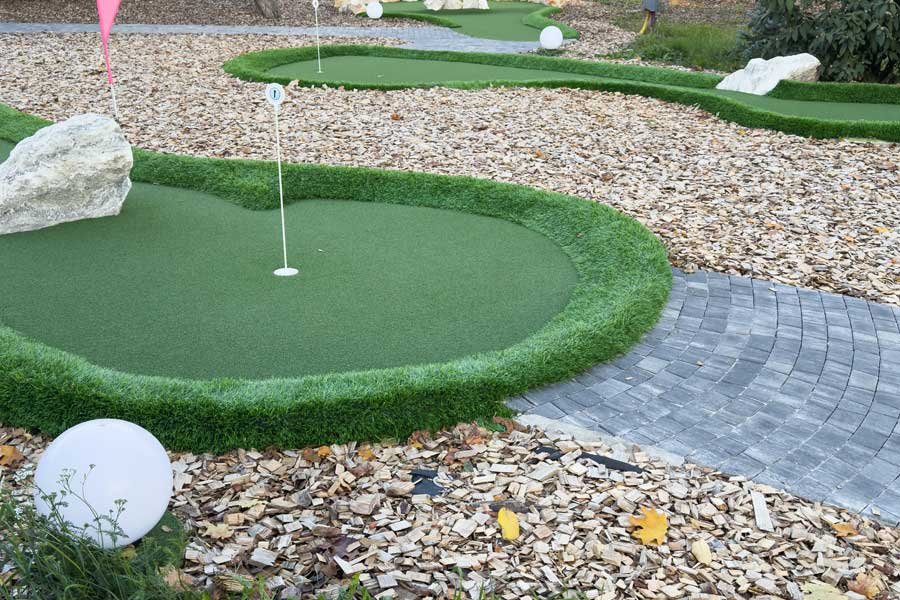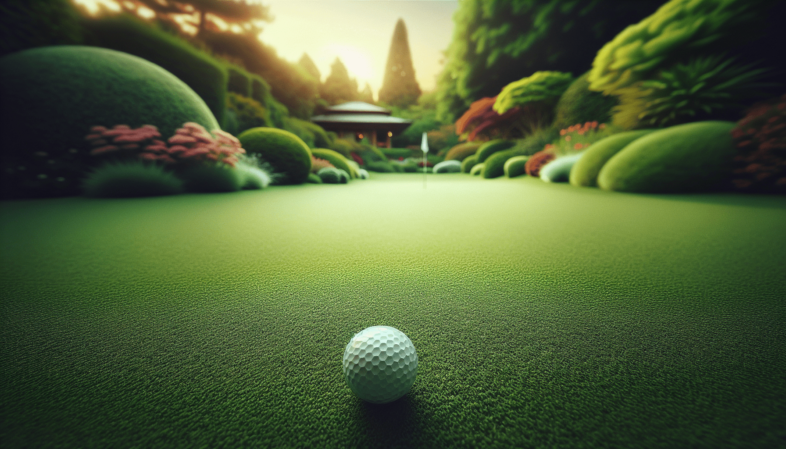When considering a personal backyard putting green, have you thought about what materials will give you the best experience? Choosing the right materials is crucial in creating a surface that mimics the wonderful greens you encounter on a golf course. Your decisions will affect not only the playing quality but also the durability and maintenance of your putting green.
Understanding the Basics of a Backyard Putting Green
First, let’s take a moment to understand what makes a putting green ideal. The surface should be smooth, fast, and consistent, allowing for a fun and practical practice space. You want to replicate the feel of a professional green, so selecting the right materials is essential.
Importance of Subgrade and Drainage
Before you think about the top surface for your putting green, let’s start with the foundation. The subgrade is crucial for drainage and stability.
- Drainage: Proper drainage prevents water from pooling on the surface, which can lead to saturation and damage. You don’t want your green to turn into a muddy patch.
- Stability: A stable subgrade helps maintain the integrity of your putting surface over time.
To achieve this, many homeowners opt for a base composed of crushed stone or gravel, layered and compacted thoroughly for optimal drainage and support.

The Best Surface Materials for Your Putting Green
Once you have a proper base prepared, you can begin to consider the surface materials. Here are the most popular choices that enthusiasts often favor:
1. Natural Grass
Natural grass is the traditional choice for putting greens, and it’s favored for its realism and playability.
Pros:
- Authenticity: Offers the true golf experience.
- Aesthetics: Enhances the beauty of your yard.
- Surface Performance: Softens impacts and maintains a perfect putting surface with proper care.
Cons:
- Maintenance: Requires regular mowing, watering, and fertilization.
- Climate Sensitivity: May not thrive in extreme weather conditions.
If you live in a region with a suitable climate, natural grass could be your best option. Common turf types for putting greens include bentgrass and Bermuda grass due to their fine texture and ability to hold up well under regular play.
2. Artificial Turf
Artificial turf has gained popularity for its low maintenance and persistent quality.
Pros:
- Low Maintenance: Requires little upkeep in terms of mowing, watering, or fertilizing.
- Consistency: Provides a uniform playing surface throughout the year.
- Durability: Can withstand various weather conditions without damaging the playing surface.
Cons:
- Initial Cost: The upfront cost can be relatively high.
- Heat Retention: It can become quite hot under direct sunlight.
When choosing artificial turf, consider materials designed for putting greens that allow for a realistic speed and feel. Look for options with a short pile height, preferably around 1-1.5 inches, designed specifically for golf.
3. Hybrid Greens
A hybrid green combines natural grass with synthetic fibers, offering the advantages of both materials.
Pros:
- Enhanced Durability: Synthetic fibers can help support natural grass, prolonging its life.
- Better Drainage: Improved water flow through the addition of synthetic materials.
Cons:
- Complex Installation: May require specific expertise for proper installation.
- Higher Cost: Can be more expensive than traditional grass or basic artificial turf options.
Hybrid greens are ideal for those looking to maintain the natural look of a grass green while gaining the durability and ease of maintenance associated with artificial surfaces.
Choosing the Right Accessories for Your Putting Green
Once you have selected the appropriate surface material, consider enhancing your backyard putting green with some accessories that can elevate your experience further.
Putting Cups and Flags
Investing in putting cups and flags can add a professional touch to your green.
- Standard Cups: Designed to mimic those found on the course, they maintain consistency with your practice sessions.
- Adjustable Flags: Allow for versatility in your practice targets.
Holes and Contours
Creating variables within the green can significantly improve your practice. Consider adding:
- Undulations: Mimic the slopes found on real greens to hone your skills in reading breaks.
- Different Hole Locations: Create various hole placements on your green, providing varied challenges.
Short Game Accessories
Besides putting, you might want to practice chipping and pitching. Accessories you might consider include:
- Chipping Mats: Durable mats designed for chipping practice can enhance your short game skills.
- Target Greens: These can help improve accuracy for those pivotal short shots.
Installation Considerations for Your Putting Green
Now that you have a solid understanding of the materials and accessories involved, let’s talk about installation. Here’s what you need to keep in mind.
Site Preparation
Preparation is vital for a successful installation.
- Site Selection: Ensure your chosen location has adequate sunlight, good drainage, and a suitable layout.
- Clearing the Area: Remove any grass, plants, stones, or debris from the area where you’ll be installing the green.
Building the Base
After clearing the area, you can focus on building a solid base.
- Excavation: Dig to a depth of about 4-6 inches, depending on drainage requirements and surface material.
- Layering: Add layers of crushed stone or gravel, compacting each layer thoroughly to build a strong foundation.
Installing Surface Materials
With your base ready, it’s time to install your chosen surface material.
- Natural Grass: If opting for natural grass, lay sod or seed according to the specific turf type you have chosen. Water regularly until established.
- Artificial Turf: Roll out turf and secure it following manufacturer guidelines, utilizing a proper infill material if required.
Finishing Touches
Adding the finishing touches to your green can make all the difference.
- Add Cups: Install putting cups according to your design plan.
- Surface Maintenance: Regular maintenance, tailored to your surface material, will ensure a top-notch putting experience for years to come.
Maintenance Tips for Your Backyard Putting Green
So you’ve created your perfect backyard oasis. Now, how do you keep it looking and playing great? Maintenance techniques will vary based on your surface choice but always remember that a little effort goes a long way toward ensuring a long lifespan for your putting green.
For Natural Grass
- Mowing: Regular mowing keeps the grass at ideal heights, promoting healthy growth.
- Watering: Water deeply but infrequently to encourage strong root systems.
For Artificial Turf
- Brushing: Regular brushing helps elevate the fibers and maintain a natural look.
- Cleaning: Rinse with water to remove debris or organic matter that may accumulate over time.
For Hybrid Greens
- Water Management: Monitor moisture levels to prevent excess saturation or drought conditions.
- Fertilization: Use appropriate fertilizers to support both the artificial and natural components of your green.
Cost Considerations
While constructing a putting green can be a fulfilling endeavor, budgeting appropriately is essential. Costs can significantly vary based on materials and surface types.
Breakdown of Costs
| Type of Material | Average Cost Per Square Foot | Maintenance Cost |
|---|---|---|
| Natural Grass | $3 – $5 | Moderate to high |
| Artificial Turf | $5 – $10 | Low |
| Hybrid Greens | $7 – $15 | Moderate |
Consider not only the initial installation cost but also long-term maintenance when budgeting for your putting green.
Conclusion
Creating a backyard putting green requires careful planning and a selection of materials that suit your needs. Whether you choose natural grass for a classic feel, synthetic turf for durability, or a hybrid approach for the best of both worlds, your selection will play a key role in your practice experience. Don’t forget the importance of a solid foundation and regular maintenance, as these factors will significantly affect the longevity of your green.
By putting in the effort to understand materials, installation, and maintenance, you’re setting yourself up for enjoyable practice sessions in the comfort of your backyard. So, are you ready to get started on your putting green journey? With the right preparations and materials, you’ll be sinking putts in no time!



